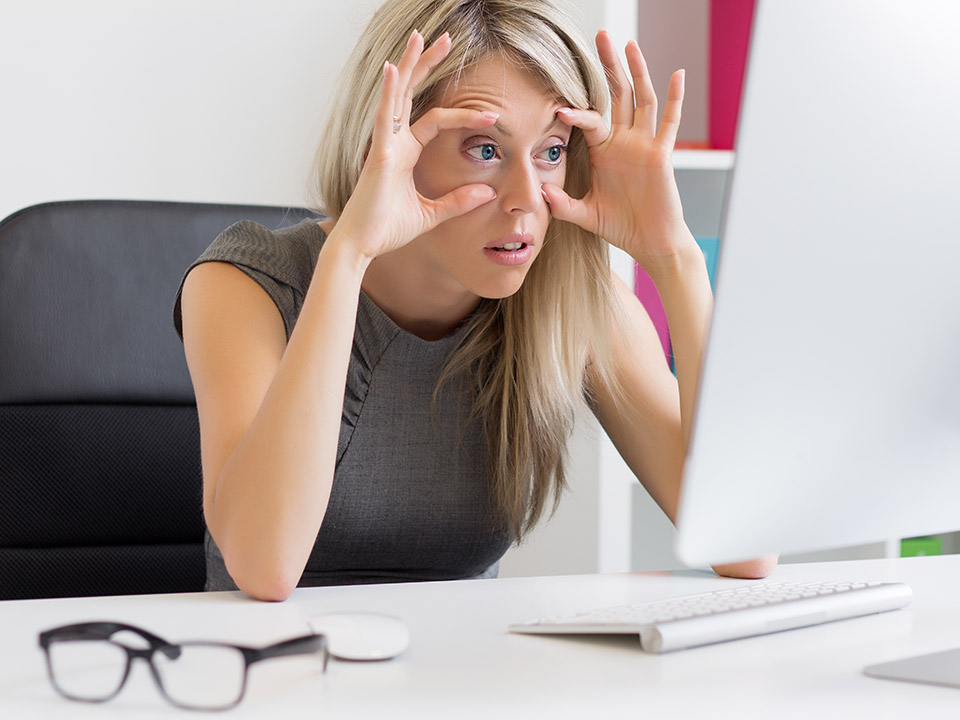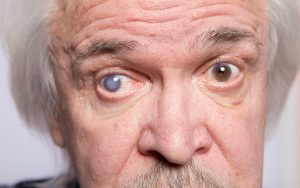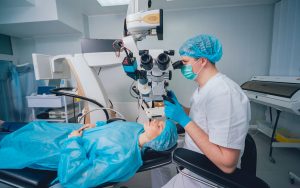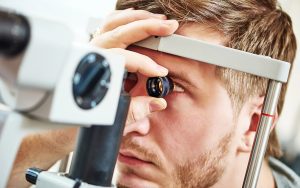Can Lazy Eye Be Corrected?

A lazy eye is your brain favoring one eye over the other, causing the weaker eye to become less effective and more impaired over time. It is a common disease among children that can result in visual impairments and loss of depth perception.
If you notice your child has symptoms of lazy eye, you should visit an eye doctor for a diagnosis. The information below covers some of the causes and symptoms of this condition to help you identify it better.
Similarly, it will cover treatment options for lazy eye, finally answering the question ‘can lazy eye be corrected?’
What Is Lazy Eye? What Does It Look Like?
Amblyopia is the medical term for lazy eye. This condition is common in young children from birth to age seven due to abnormal visual development in younger years. Kids develop this condition when the brain favors one eye. The brain does this because the other eye likely has poor vision.
The brain ignores signals from the weak eye, and over time, the eye may wander in different directions, hence the term. Besides this, the eye looks normal in color, shape, and other characteristics.
The condition often affects one eye, but it can affect both in rare cases. Lazy eye is the leading cause of decreased vision among children. Without treatment, your child could sustain temporary or permanent vision loss, including loss of depth perception.
It is important to note that people often confuse lazy eye with crossed or turned eye. This condition is called strabismus, and while it is also common in children, it is not the same as lazy eye. However, if your brain favors the uncrossed eye more than the crossed one, it can lead to lazy eye.
Symptoms Of Lazy Eye
The primary symptoms of lazy eye include:
- One eye that wanders inward and outward with little control
- Poor depth perception – depth perception is the ability to tell the distance between two objects
- Head tilting – children develop a head tilt to compensate for the weak eye and eliminate double vision
- Eyes that cannot focus on the same thing or do not appear to work together
- Abnormal results from vision screening tests
- Bumping into things on one side a lot
- Favoring one side of the body
- A shut or ever-squinting eye
- A droopy eyelid on the affected eye
- Squinting
Some children do not develop visible symptoms such as eye wandering or a droopy eyelid. Therefore, you would have to visit a good eye doctor to give you the diagnosis. Look out for bumping into things on one side, the head tilts, and favoring one side of the body.
Causes Of Lazy Eye
Some of the primary causes of lazy eye are:
- Muscle imbalance – an imbalance in the muscles that position the eyes causes the eyes to cross or turn out. This prevents them from working together, causing lazy eye in the patient.
- Refractive errors – a refractive error means that light does not pass through the eye correctly, thus affecting the way images form. Refractive errors are common and include myopia or nearsightedness, hyperopia or farsightedness, and astigmatism or a curved cornea.
- Cataracts –this condition causes cloudiness in the lens, leading to blurry vision. This condition can rely on one eye, making the other weaker.
- Droopy eyelid – a droopy eyelid will impair vision in the eye, making the brain favor the one with good vision.
- Strabismus – this is a crossed-eyes condition where one eye may drift. This makes the brain reliant on the one that remains uncrossed.
- Vitamin A deficiency – vitamin A deficiency makes your vision impaired. One eye can remain stronger, forcing the brain to rely on this eye. This makes the other eye lazy.
- Glaucoma – glaucoma is pressure in the eye that leads to multiple vision problems, including lazy eye. It can even cause blindness without proper treatments.
- Eye surgery – and even complications from eye surgery can make your eyes struggle to move together, making one of them lazy.
Treatment options for lazy eye
So is lazy eye treatable, and can your vision go back to normal? Yes, a lazy eye can be corrected if you treat the underlying condition. This is the most effective way to get your eye back to normal. Early diagnosis is best, especially for children. But you can get it corrected even when you are older.
Eye doctors diagnose lazy eye through a series of vision tests such as following a light with each eye, then both eyes, looking at your eyes with a magnifying device, and identifying letters or shapes on a chart. The doctor will also examine visual clarity, eye muscle strength, and level of focus.
Once they determine the cause of the lazy eye, the doctor will recommend a few treatments, including:
Corrective lenses
Your doctor will recommend corrective lenses if the underlying problem is refractive error. The doctor will conduct tests to determine the type of error you have and then get a prescription for contact lenses or glasses. Continued use should correct the lazy eye.
Eye patch
Doctors can also recommend wearing eye patches to children. The eye patch will stimulate the weaker eye since the patient will wear it on the stronger eye.
This will temporarily restrict vision in the strong eye, forcing the weaker one to take over. The doctor will recommend wearing an eyepatch for two to six hours (sometimes more) per day, and the weaker eye should get stronger.
Bangerter filter
A Bangerter filter works similar to an eye patch. The filter goes on the eyeglass lens of the strong eye, forcing the weaker eye to function and eventually become stronger.
Surgery
If the underlying cause is a droopy eyelid, the patient will require surgery to correct it. The same goes for patients with cataracts and cross-eyes syndrome. Surgery will repair the eyes, thus helping the lazy eyes.
Eye drops
Atropine drops are recommended for patients with lazy eye as it temporarily blurs vision in the stronger eye. The doctor can recommend daily or weekend use to ensure the patient uses the weaker eye. It is an alternative to patches and the Bangerter filter.




